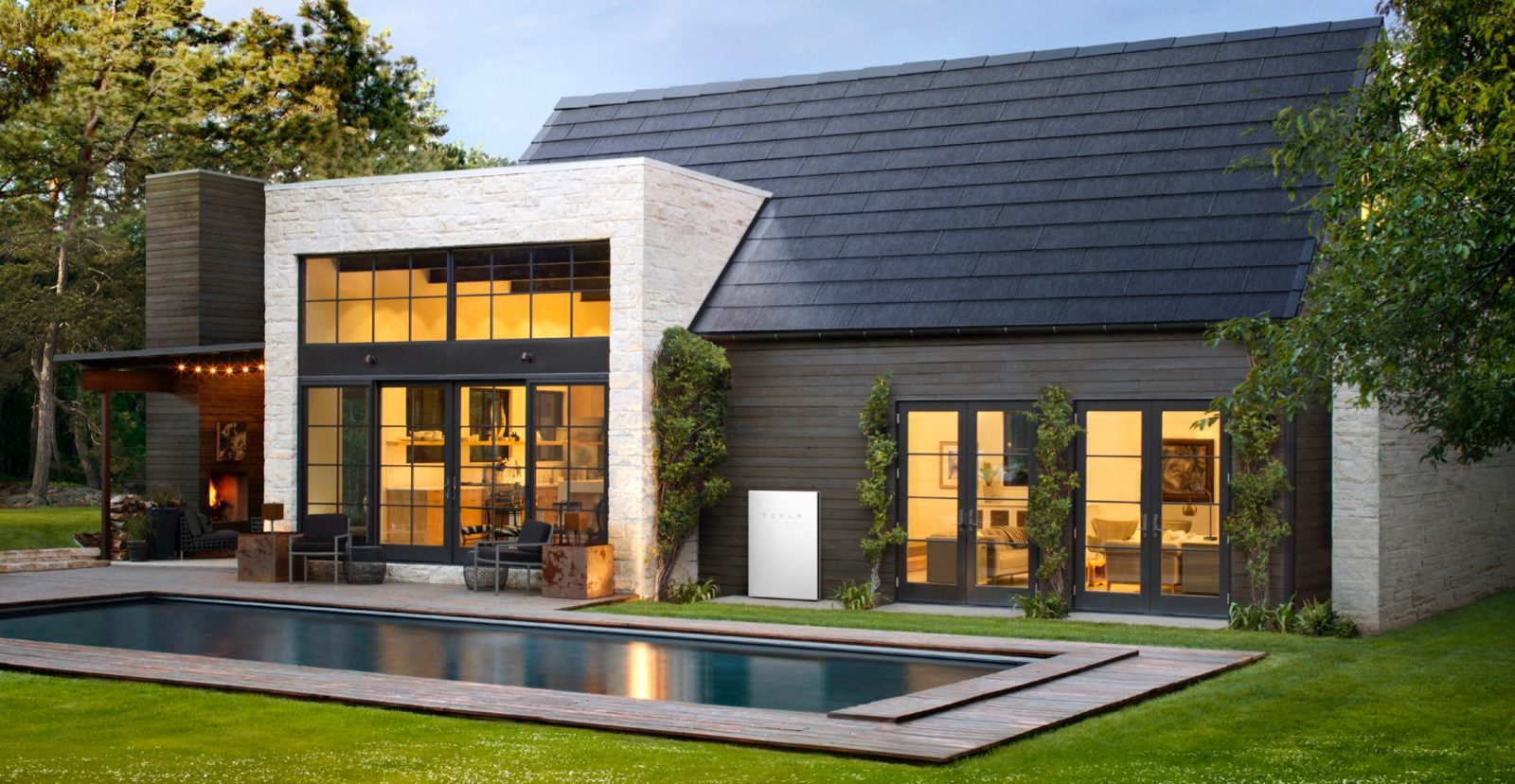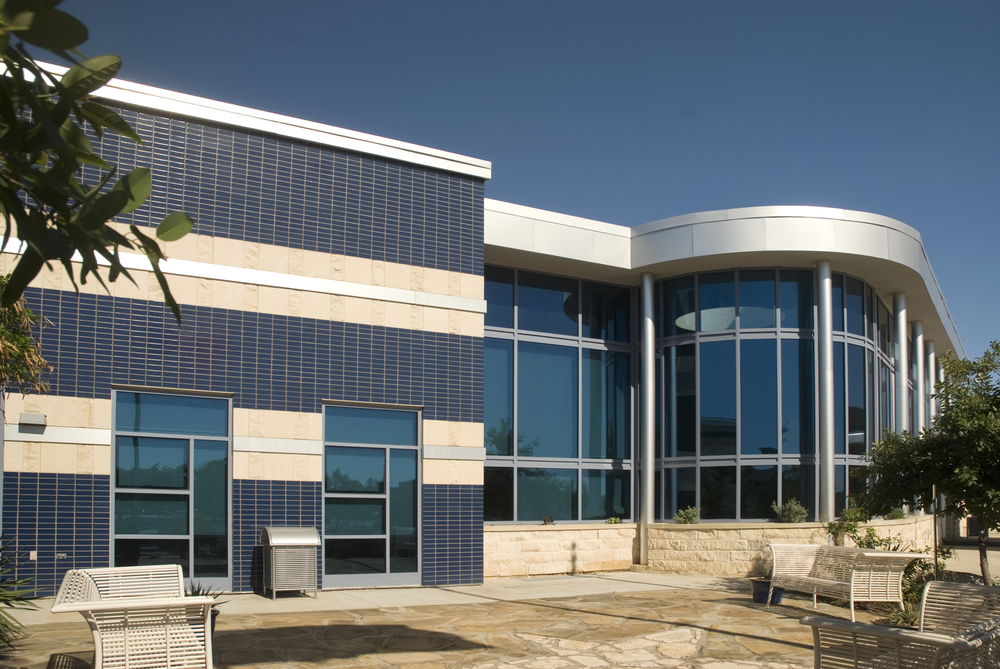New solar technology is changing the face of solar energy. At Avolta Energy we love Solar Energy. We love the fact that it saves people money and just might save the planet. We love the technology, and we even think solar is beautiful. However, it is also true that most solar installations look pretty similar, rows of dark gray or black panels usually either up on a roof or mounted on the ground. Slowly but surely, new solar technology is changing that, learn about 5 new technologies to watch.
A Standard Ground Mounted Solar System

A Standard Roof Mounted Solar System

New Solar Technology: Solar Is Getting More Beautiful
Thankfully, the look of solar installations is slowly starting to change. New solar technology is coming to market. From custom branding solar which incorporates your brand design directly on to your PV roof installation to integrating solar panels on to the exterior of a building, a process called: Building Integrated Photovoltaics or, BIPV solar, solar energy is transforming. But, innovation in solar energy is not limited to land and buildings. Read on to learn about new solar energy technologies that are shaping savings, efficiency, company image, and sustainability.
1. Solar Skins Give Solar Character And Elevates Brand Placement to new Heights
Placing a print on top of your solar panels is called a Solar Skin. Our favorite solar skin project started up this year at the Whistlepig Rye Whiskey Distillery in Vermont USA.
Their excellent whiskey is now manufactured with the help of energy derived from one of the most stylish PV systems in the world.

The very cool branding does come at a cost, both in terms of the added cost of the custom print job but also in terms of lost energy generation which run from 1-8% of a project’s yield. The amount of energy lost depends on what is getting printed on the panels.
If you are interested in high impact branding by incorporating printed solar panels and want to know more, get in touch with us at Avolta Energy, and we will get you a quote for a full solar system that will really stand out and leave an impression with your customers.
BIPV solar skins provide a protective skin to the building that includes thermal and acoustic insulation like any other common construction product. They can be used for all types of surfaces, such as roofs, windows and facades. The energy generated by photovoltaic technology can be used directly in the building, contributing to more sustainable cooling and electricity consumption.
Solar skins are notably a powerful innovation in helping carbon-neutrality efforts and as a result, are being deployed around the world towards this end. Contact Avolta Energy to talk about retrofitting existing buildings or using BIPV to meet carbon emission pledges, and win marketing accolades as a bonus.
2. Tesla Solar Roof

Tesla’s Solar Roof continues to be heard about more than actually seen in the wild, although in their 3Q 2020 earnings reports they stated that Tesla Roof Deployments tripled from the previous quarter without specifying either quarter’s actual number. Our guess is the 3x a small number is still a small number. There is some promising news in that the Solar Roof installation time was reportedly cut to just 1.5 days for a smaller sized roof, but the Solar Roof remains very elusive in real life and basically non-existent outside the USA.
3. Building Integrated Photovoltaic System (BIPV Solar)
Building Integrated PV (BIPV) continues to advance though it remains an expensive option. The Taiwanese company HeliArtec offers some beautiful looking Aesthetic Energy Panels which integrate PV into building facade materials.

And in what is a clear candidate for all round coolest solar installation the same company HeliArtec deployed a beautiful solar facade on a 3D printed concrete house project in Belgium.
The PV facade relies on Heliartec’s Pixasolar BIPV panels. The modules are based on PERC monocrystalline cells with an efficiency of 22.5%. They vary in length from 30 cm to 240 cm, depending on the size, the panels can offer power outputs of 120 W to 160 W per square meter. The panels weigh 28 kg per square meter and come with a 30-year linear power output guarantee and 10-year product guarantee.

Sustainable Architecture and BIPV Solar: Recladding An Occupied Building
Unlike traditional solar panels, BIPV solar designs blend in with a building’s existing design. Dutch architects UNStudio completed the top-to-bottom renovation and re-skinning of an existing office tower in Seoul for corporate headquarters of Hanwha. The exterior of the building is now clad with solar panels and solar cells representing sustainability stunningly. Parts of the facade that hold the solar panels are also angled to make the most of the sunlight while shading the windows below, gone is the traditional black opaque exterior.

The result of this ‘remodeling in place’ is a building with a healthy indoor climate, an extremely flexible programme and a completely new, energy-generating facade with integrated solar panels. – UNStudio, Dutch Architects behind the sustainable re-design

4. Floatovoltaics: Solar Power Without the Expensive Real Estate

Floatavoltaics is not exactly a new technology, but we keep getting better at putting solar panels on the water, a technology dubbed Floating PV or ‘floatovoltaics’.
Floating solar is starting to hit its stride with Fitch forecasting more than 10GW globally by 2025. The placement of solar panels on water is beneficial for water reservoirs as the coverage provided by the panels can reduce the amount of water evaporation and in some cases even limit algae growth.
A study earlier this year by the US Department of Energy’s National Renewable Energy Laboratory (NREL) said that wiring in floating solar arrays to existing hydropower reservoirs around the world could change the face of the global energy system and meet almost 50% of global total electricity demand.
The researchers estimated that as much as 7.6TW of power could be produced from floating PV. This works out to about 10,600TWh of potential annual generation – even before the additional output from the actual hydro plants – compared to worldwide electricity consumption which, according to IEA 2018 figures was just over 22,300TWh.
There are many potential benefits from coupling floating PV with hydropower. A hybrid system would reduce transmission costs by linking to a common substation. The two technologies can balance each other out in that solar will shine during dry seasons, while hydropower will do best in the rainy season; and operators of a hybrid system could use pumped storage hydropower to store excess solar generation.
5. Agrivoltaics: Agriculture + Solar Energy
Combining PV with agriculture or ‘Agrivoltaics’ not only generates power but creates agricultural efficiencies. Read more about Agrivoltaics and its benefits in one of our earlier blog posts. One of the most interesting developments here is in France where combining PV with growing grapes for wine has proven very promising in terms of reduced water usage and better vine resiliency during times of water stress.

Coffee producers in Central America interested in combining solar panels and shade-loving coffee plants, reach out to us here at Avolta Energy. Many other drought impacted crops commonly grown in Central America could pair with solar panels easily. It is no longer a choice between growing food or energy production but a synergy between the two. With water scarcity growing more serious each season, Agrivoltaics creates a mutually beneficial by-product– less water is often needed under the solar arrays due to the shade the solar panels provide.
New Solar Technology is High-Efficiency, Growing More Beautiful and Versatile
Solar energy is not only getting cheaper it’s transforming from the inside out. Manufacturing at scale is lowering costs and letting more projects get done whatever the conditions of the weather or land. The percent of future energy needs that can come from Solar is growing. For more information contact Avolta Energy to find out how your company’s image and bottom line can capture the benefit of new solar technology.


